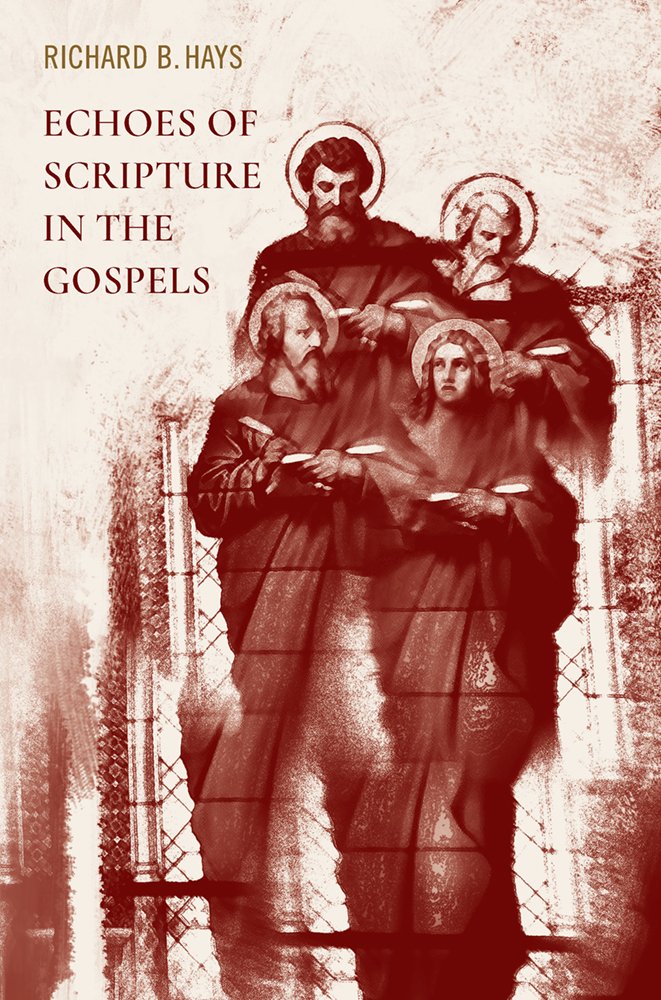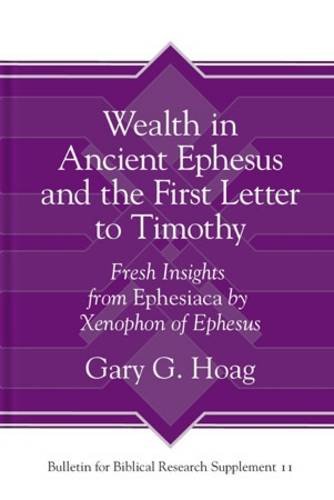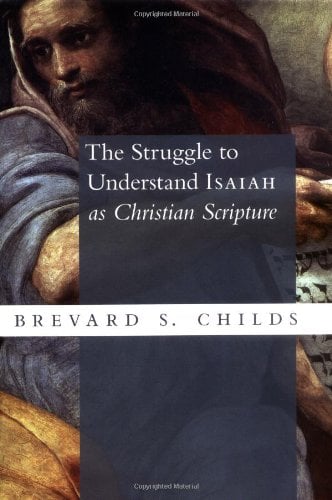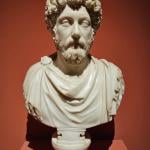A REVIEW OF RICHARD HAYS’ ECHOES OF SCRIPTURE IN THE GOSPELS, (BAYLOR, 2016)
(A fuller and annotated version of this review will appear as an Appendix in my forthcoming book Isaiah, Old and New).
I was teaching in Nova Scotia in June of 2015 and with the encouragement of a friend and the exhortation in Is. 55.1b in mind, I visited the local winery where they produce ice wines. What are ice wines you may ask? They are wines that come from the practice of leaving grapes on the vine into the winter when the grapes freeze, shrink, and the sugar content somehow intensifies, producing dessert wines of exceptional sweetness.
Something similar has happened in the process of Richard Hays’ producing this very fruitful and interesting book Echoes of Scripture in the Gospels. Richard had been working on the manuscript for some time when he had to put it on ice so to speak, in his filing cabinet, because he was unexpectedly called upon to be the Dean of Duke Divinity school for a good number of years, an all consuming task, and then life also intervened in the form of a health crisis. He feared the manuscript would never be completed or see the light of day, but by the grace of God and help from his doctoral students and friends, including his friends at Baylor Press, this manuscript has been brought out of the deep freeze and turns out to be an example of ‘saving the best wine for last’ (John 2). This is clearly Richard’s best book, the most engaging, probing, challenging, and detailed of all his valuable writings. In short, this is vintage Hays, well-aged and worth the wait. It bears the good marks of long reflection on a particular topic, leading to well argued results. I expect it to get nominations for Biblical studies book of the year, and I would gladly amen that.
As Richard makes clear in his introductory remarks, this Echoes book was actually the source material for the book that was published earlier, Reading Backwards. The egg showed up before the chicken, mirabile dictu! Echoes gives us a larger set of examples of what Richard’s approach to intertextuality and metalepsis look like, dealing with Gospel material where the OT is frequently cited, alluded to, and echoed. What the theory assumes is an audience (or at least members in an audience) that has an encyclopedia of reception large enough to recognize echoes of OT texts in the Gospels, and even places where phrases in a quote text are (deliberately) omitted such that they know to go back and search the Scriptures to appreciate the larger context and resonances of the quoted portions of, say, Isaiah.
This sort of ‘figural’ reading actually requires a retrospective approach for one cannot really talk about an earlier text foreshadowing later events and texts before the later texts and the events they report existed. The recognition of intertextuality of this sort requires hindsight. One wouldn’t know for instance that Isaiah 61 (see Lk. 4) was foreshadowing an event in the life of Jesus before the event actually happened. One especially wouldn’t know or anticipate this in advance since the oracle in Isaiah 61 was poetic and metaphorical in character, and because of its poetic qualities could have a surplus of meaning. I think this figural reading approach, which could be said to be a sub-heading under a type of allegorizing approach, is a fruitful one if we allow that it is actually only one of the ways the Gospel writers approached the OT.
I say this not least because it is clear enough in various places in the NT that these same NT writers believed in ‘predictive prophecy’, which is to say that the prophets deliberately and intentionally spoke about messianism, about a suffering servant, about future salvation which would even include Gentiles, about a new heaven and a new earth, and so on. In their views, they were not simply transformers of previous texts, giving them new meaning, they were interpreters of the Word once given, encouraging us to read the text forward as well as backwards.
And even when the NT writers were transforming the OT text in creative ways, for example as Paul does in Gal. 4, these improvisations presuppose a stable text to which one can return again and again, and use in a variety of ways. I would use the analogy of say John Coltrane’s famous version of the Sound of Music song ‘My Favorite Things’. ‘Trane was not trying to faithfully ‘exegete’ that song, he was rather using it as a taking off point for a creative improvisation, but at the same time he was well aware of what playing the tune straight amounted to and sounded like, and he presupposed that his audience did as well (they could look at a copy of the original sheet music or put on the recording of the Sound of Music), so they could appreciate where he was, so to speak, playing outside the lines on the staff paper. I think, in other words, that figural interpretation was only one of the tools in the hermeneutical toolbox of the Gospel writers, and it was not one they always used, certainly not to the exclusion of other ways of using the OT.
Richard gives us lengthy treatments of each of the four Gospels, and helpfully demonstrates how they each approach the use of the OT somewhat differently. He works from probably the earliest Gospel (Mark) to probably the latest (John), comparing and contrasting what is going on in each case. In the case of Mark, while there are sometimes quotations from the OT, more often hints and allusions are the order of the day that fit his more apocalyptic portrayal of the story of Jesus. The hints and allusions “project the story of Jesus onto the background of Israel’s story. As Mark superimposes the two stories one on another, remarkable new patterns emerge, patterns that lead us into a truth too overwhelming to be approached in any other way…[Mark] proclaims a message that leads us into mystery.” He adds “the story is intelligible, at one level, for readers who do not hear the scriptural echoes. But for those who do have ears to hear, new levels of complexity and significance open up.” He sees the Scriptural allusions as like what is said about the parables, concealed for many but revealed to some who know how to listen. We will say more about what this suggests about the original audience in due course.
By contrast with Mark, Matthew’s approach to the use of the OT is much less covert and much more overt and didactic. The Evangelist tells us why certain things took place in the life of Jesus, namely to fulfill this or that OT prophecy. To the ten obvious formula quotations one can add texts like Mt. 2.5-6, 3.3; 13.14-15 and Jesus’ own words in Mt. 26.56. “Cumulatively, these passages frame Israel’s Scripture as a predictive text pointing to events in the life of Jesus.” Richard calls most of these examples ‘authorial voice overs’. He adds “Nonetheless, these instances of prediction and fulfillment are only highlights on a larger map, only fragmentary features of a much larger intertextual reality. For Matthew, Israel’s Scripture constitutes the symbolic world in which both his characters and his readers live and move. The story of God’s dealing with Israel is a comprehensive matrix out of which Matthew’s Gospel narrative emerges. The fulfillment quotations, therefore, invite the reader to enter an ongoing exploration of the way in which the law and the prophets in their entirety find fulfillment (Matt 5.17) in Jesus and in the kingdom of heaven.” This sort of approach suggests a Jewish audience, many of whom are well-versed in the OT.
Luke takes yet another and different approach than either Mark or Matthew. Hays sees Luke as the most skillful in joining the story of Israel seamlessly to the story of Jesus. Luke uses the language of fulfillment a great deal, in fact some fifteen times in the first four chapters to set up the theme of the story of Christ as a story of fulfillment of OT texts and stories and institutions. In Luke, direct quotations are almost always in the mouths of the characters in the narrative, they are not authorial comments. “This narrative device imparts to Luke’s intertextual citations a dramatic character; readers are required to interpret the intertextual relations in light of the narrative’s unfolding plot…Luke ‘ripples with intertextuality’ because it constantly unfolds Old Testament patterns into its story.” For example the story of the raising of the widow of Nain’s son uses some of the language of the similar story in the Elijah cycle.
Of course it is possible that the reason Luke has the characters in the narrative do the quoting of the OT is because he doesn’t want his audience to be distracted with the task of going back and finding OT scrolls to figure out what’s going on in the Gospel story. Hays argues that presenting the OT material this way creates a sense of historical continuity with the past, the characters in the story insist on it by quoting the OT, without additional authorial commentary.
However frequently what is being cited is not ‘the old, old story’ at all, but rather previous prophetic oracles used to explain the current story and how it is a fulfillment of the promises and prophecies of old. I am thus doubtful that the reason Luke doesn’t retell the old stories is because he assumes they’ve already been read. More likely, he is hoping that these quotations will peak the curiosity of Theophilus to go back and explore where the Scripture quotations came from, with the aid of the learned lector who reads these large documents to him.
Yet again, John is a horse of a different color. “John contains relatively few direct citations of the Old Testament. If we tabulate John’s Old Testament references in comparison to those of the Synoptics, including allusions, the totals are striking, Matthew 124; Mar, 70; Luke 109, and John 27.” John, just “as he condenses the traditions of Jesus’ healing and miracle working activity down to a few selected episodes that are given more extended development than in the synoptic tradition, so also John focuses on a smaller number of Old Testament quotations”, between 13 and 17 explicit quotations. As Hays goes on to demonstrate, John relies more on images and symbols from the OT rather than quotations to tell his Gospel story, and this is in part because Jesus is depicted as fulfilling the institutions, symbols, as well as prophecies of the OT.
Interestingly, John relies more on the Psalms and less on sources like Isaiah in comparison to the approach in the Synoptics. Hays puts it this way, “John understands the Old Testament as a vast matrix of symbols prefiguring Jesus. In contrast to Luke’s reading of Scripture as a plotted script showing the outworking of God’s promises in time, John understands Scripture as a huge web of Christological signifiers generated by the pretemporal eternal logos as intimations of his truth and glory.” There are many more positive things that could be said about the richness of this approach to the Gospels’ use of the OT, an approach which a scholar like myself or Richard loves to immerse ourselves in, savoring the complexity and diversity of the Gospel texts. But were these Gospels written for folk like us, Biblical scholars?
As I intimated in the discussion with Richard about Reading Backwards (found earlier on this blog) there are some problems with: 1) assuming an audience of ‘readers’ rather than hearers; 2) assuming a literate much less a Biblically learned audience capable of catching nuances, echoes of Scripture, omissions in citations. Let us list some of the historical issues with this approach, focusing on Richard’s treatment of Luke-Acts.
From all the evidence we have, the vast majority of people in the Greco-Roman and early Jewish world were not literate in the modern sense of the term (maybe 15-20% tops in major cities). Is it possible of course that Luke-Acts, for example is written for a socially elite person, Theophilus, who may be the patron of Luke, and for his small literate circle? Yes, it’s plausible. But does one really want to make the case that the Gospels are elitist literature?
The historian would say Luke is probably not creating readers or reading circles of people learned in the OT, but addressing listeners because these are oral texts, texts meant to be read out loud, and if they are mainly Gentile listeners, they are likely mainly listeners for whom intertextual echoes of and allusions to the OT will be missed again and again. The intertextuality approach of Richard can more nearly be said to work if we are talking about an intertextuality of production, in the head and in the articulation of the author, rather than an intertextuality of reception, because the latter presupposes far too much about the audience and their literacy and knowledge of the OT, an audience who is largely unknown.
The Gospel story may be told in arcane language and may occasionally quote arcane texts but that language and those texts are now part of a new story, a new discourse, and must make sense without scurrying back to the OT again and again to get the full gist of the story because probably only a tiny minority of the audience, probably only a few Jewish Christians or God-fearing Gentile Christians, are learned enough and sophisticated enough to catch and then probe the allusions or echoes, or even for that matter to know where to look for the quotations.
After all, even the extant scrolls of say Isaiah did not have chapter or verse markings, or even separation of words. Finding the source of allusions and discovering the metalepsis resonance would be like looking for a needle in a very large haystack in the first century A.D. And imagining that many people in Luke’s audience had a huge amount of the OT memorized is assuming too much, unless one is going to argue that this Gospel was written for devout and for that matter learned Jewish Christians. This is not likely.
Theophilus would not have needed the sort of account Luke says he’s giving in Lk. 1.1-4 if he already knew the Gospel story and the OT to boot. Possibly he was a God-fearer, like Luke himself may have been. So perhaps a minimal competence in some key OT texts could be presupposed, but alas the way Luke uses the OT presupposes a much greater reading competence and sophistication than that, when it comes to the OT. So perhaps Luke is writing well over the heads of most of his audience, but he hopes they will catch enough of the drift to be saved and become curious to probe more about the backstory and about Israel’s Scriptures.
Perhaps the Gospels are not texts meant to just be heard or read, but rather to be ruminated on for years, as Richard has so ably done in this book. But in antiquity only the socially elite, the literate, with servants to boot, were likely to have time for such rumination. The notion that Luke has created a story of such complexity and subtlety that it requires an audience who: 1) can read; 2) can recognize the source of the quotes, allusions, and echoes; 3) have the time, resources (scrolls!!) and energy to read carefully and patiently again and again to full benefit from such a subtle story-telling that there are allusions at every turn and metalepsis keeps happening, will strike many historians and classics scholars as suggesting that this is not ‘the Gospel for all Christians’ but to the contrary the Gospel for the well-educated scribe or scholar or patron with plenty of time on his hands to ponder elegant documents like Luke-Acts.
For me personally, the dilemma is I think Richard is to a real degree right about the richness and complexity of the intertexual situation in the Gospels. Not always, but often enough to raise serious questions about the character and audience of these documents. My conclusion then is that in terms of original audiences, the Gospels were not written for just anyone, they were written for the learned, and not just any learned but especially those who were already competent in the OT, or knew those who were. They were written for quite specific persons and communities, which presupposed and required a significant quotient of literate readers and interpreters of these texts within these communities. The Gospel of John may be something of an exception, but probably not.
And this brings up one final point. E.A. Judge long ago made the case that early Christianity was not led by the illiterate, the poor, the slaves, or average women for the most part. The leaders of the fledgling communities were ‘socially more pretentious’ (to use his terms), of a higher social status than perhaps most of the community, and they were more likely to be literate, and in rare cases, like Paul or the author of Hebrews, learned. If this is not the case, then it would seem that the very character of this literature violates the principle and desire to share the Good News with all people, at least by means of this literature itself. Perhaps the approach to preaching was different than the approach found in our Gospels, but from all the evidence we have, for example in Acts, this is doubtful.
I will stress again– the vast majority of people in the Greco-Roman and early Jewish world were not literate in the modern sense of the term (maybe 15-20% tops in major cities). Florian Wilk, in a helpful discussion about Paul’s use of Isaiah says the following and he is worth quoting at length:
“Christianity arose on the basis of historical events, which are recounted, attested, interpreted, and reflected in a primary fashion in the New Testament. The New Testament books thus bind Christianity permanently to its historical beginning. Accordingly, they must also, indeed, first, be perceived as texts that were written in specific historical situations, and intended for specific historical situations….With regard to the connections between Paul’s letter and the book of Isaiah, however, the perspective on the author is more important and fruitful than that of the addressees. The difficulty of a reception-oriented perspective in this case consists in the fact that we know nothing about the degree of knowledge of Scripture that the Christians to whom Paul wrote had… Therefore, one can only assume a communicative function of scriptural connections on the basis of explicitly marked citations. ….The extent to which they would identify inexplicit connections with Isaiah as such must remain completely open….One can hardly imagine, however, that [even if they felt obliged to do some searching of the Scriptures] such a learning process led the addressees to the point where they would track down unmarked references to Isaiah to a significant degree. This would require scriptural knowledge available only to specially trained persons.”
With this reasoning I entirely agree, and would add that we have even less knowledge about the audiences of the Gospels than about the audience of the Epistles or Revelation. We do not know what their encyclopedia of reception was when it comes to the OT. I think it is plausible that a Gospel written mainly to Jewish Christians, such as Matthew’s Gospel may have been, could assume some things about some of the audience, but it is striking that even in that Gospel the Evangelist goes out of his way often, and from the outset to specifically quote the OT and use citation formulas. Not for him the more allusive approach of Mark.
Perhaps then these Gospels were meant to be used as teaching tools by the literate and learned, not to be used as tracts to hand out to just anyone. If so, then the figural reading approach is plausible as one hermeneutical tool the Gospel writers used in their approach to the OT. Figural reading is helpful, but the limitations of that hermeneutical approach should not lead us to think it is the only way the NT writers themselves read the OT, nor should it lead us to limit ourselves to just figural or historical-critical readings. And there may be another kind of problem with over-doing the figural reading approach, from a narratological point of view.
Let’s suppose for a moment a literary critic of Richard’s approach argues as follows: ‘The problem with all this metalepsis and urge to read the OT backwards, is that in fact this is the sort of scholarly endeavor that goes in the opposite direction of the trajectory and flow and purpose of the Gospel narrative. What is actually happening in the Gospels from a narratological point of view is the using of old Scriptural language to tell a new and forward moving story. That is, the author is not wanting us to scramble back to the OT and look at those words in their original contexts. To the contrary he wants us to follow the story going forward to its eschatological conclusion and pay attention to how all this Scriptural language is being used now in its Gospel context, pointing forward to the conclusion of the salvation historical story.’
‘The author believes he lives in the eschatological age of fulfillment and while he is affirming that old stories, old ideas, etc. are being fulfilled in the Christ story, the point is not to urge people to find the OT allusions and echoes in this material and then do a close scrutiny of all sorts of old texts, but to the contrary the point is to hear and embrace what God is doing now and yet will do in Christ. Like a movie which has homages to various previous classic films in it and is not implicitly urging the audience to go check them out so they can understand the current film, rather the Gospel writer wants to tell its own story that stands on its own, and wants to have the audience focus on the use of the material in its new context, following the tale told to the end.
‘The Gospel writers point us into the future not the past, and none more so than Luke, who plants lots of seeds in his Gospel that he deliberately doesn’t bring above ground until Acts, the second volume of his work. So, each Gospel should be judged on its own merits in its own context and the words in it have meaning in their immediate literary contexts, whatever they may have meant in previous contexts. The Gospel writers did not expect their audiences to do detailed research on or remember large quantities of the OT to understand the meaning of their Gospel stories.’ This I think makes some valid points well worth considering when pondering the cogency of Richard’s case and his approach to intertextuality.
It is the sign and measure of an excellent book that it raises profound questions about things we think we have known all along about the Gospels, and not just about the Gospels, but about the whole enterprise of the use of the OT in the NT. From now on, figural readings and metalepsis had best be terms and concepts we become familiar with, because the Gospels suggest that such approaches shed light even in dark corners of the NT text. Well done Richard. Thank you for letting us share some of your fine, well-aged, wine. We are so very glad you were able to bring this out of your wine cellar, and offer it freely to us all.












